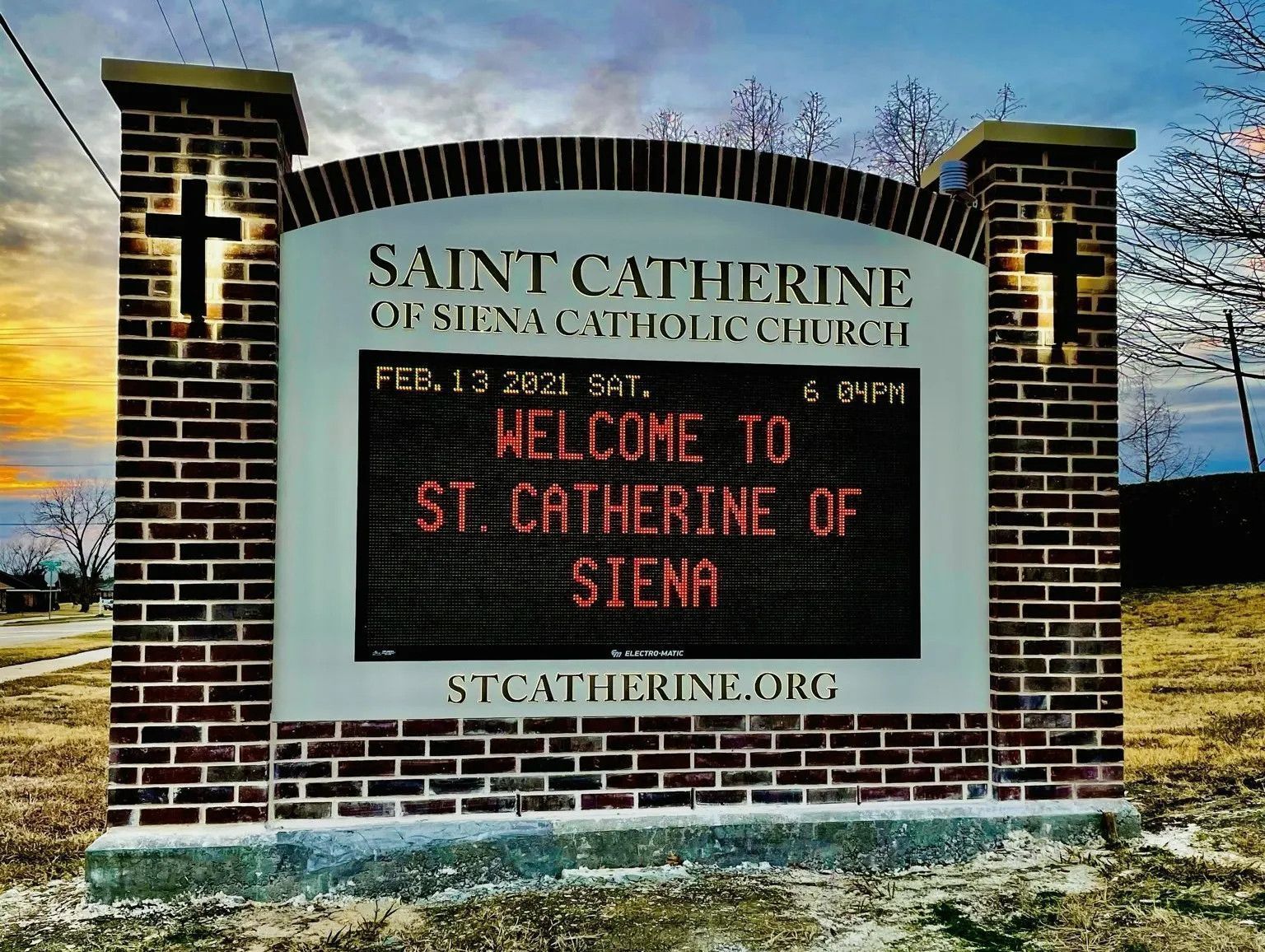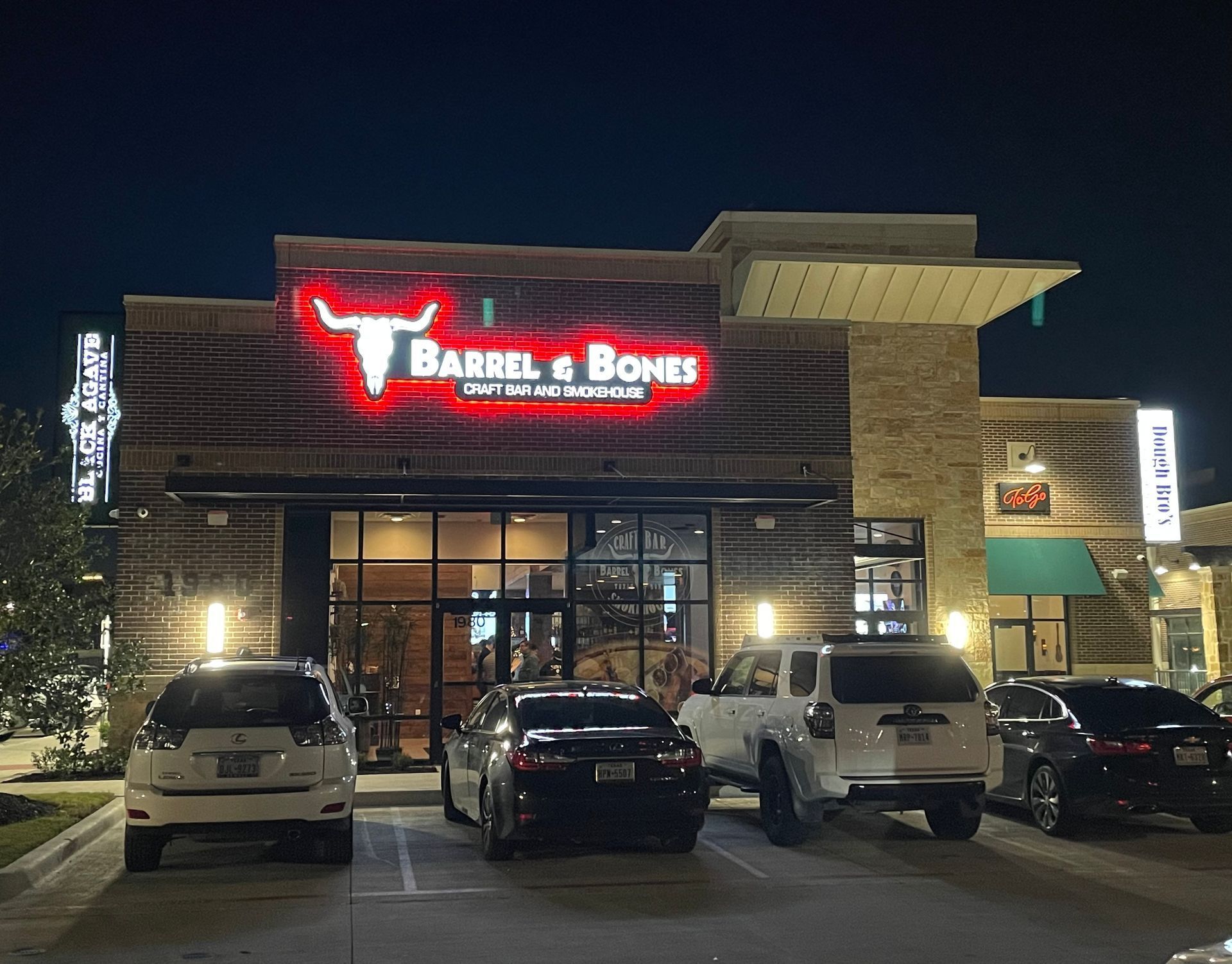Revolutionizing Outdoor Advertising: The Power of Electronic Message Centers (EMCs) in Monument Signs, Pylon Signs, and Pole Signs
July 7, 2023
July 7, 2023
In today's fast-paced and digitally-driven world, capturing attention and effectively communicating messages to a wide audience has become increasingly important for businesses and organizations.
Traditional static signs, although still relevant, often struggle to keep up with the dynamic nature of modern advertising. However, with the advent of Electronic Message Centers (EMCs), monument signs, pylon signs, and pole signs have been transformed into powerful marketing tools that offer flexibility, versatility, and enhanced visibility. In this blog, we will explore the various benefits and applications of EMCs in outdoor advertising, and how they are reshaping the way businesses connect with their target audience.
- Dynamic Content and Real-Time Updates:
- One of the most significant advantages of using EMCs in monument signs, pylon signs, and pole signs is the ability to display dynamic content. Unlike traditional signs, which are static and limited in their messaging capabilities, EMCs allow businesses to present multiple messages, graphics, animations, and even videos on a single sign. This dynamic nature enables real-time updates, making it easy to showcase time-sensitive promotions, special events, or changing information like business hours, weather updates, or emergency notifications. By harnessing this flexibility, organizations can engage their audience more effectively and adapt their messaging to the ever-evolving market conditions.
- Increased Visibility and Impact:
- EMCs significantly enhance the visibility and impact of monument signs, pylon signs, and pole signs. The bright, vibrant LED displays used in EMCs are eye-catching and can be easily seen from a distance, even in broad daylight. The ability to incorporate motion and animation further captures attention, making passersby more likely to notice and remember the message being displayed. By leveraging the power of EMCs, businesses can stand out from the surrounding environment, create brand awareness, and generate greater footfall or customer interest.
- Cost-Effective and Time-Saving:
- While initially, the investment in an EMC may seem higher than that of a traditional static sign, it offers significant long-term cost savings. With EMCs, there is no need for repeated production costs associated with printing new signs for different promotions or changing messages. Instead, businesses can update their messaging instantly and at minimal cost. Furthermore, the ability to remotely control and schedule content ensures efficient time management, as updates can be made from a central location without the need for physical intervention. This convenience allows businesses to stay responsive and nimble in their advertising strategies while saving time and resources.
- Targeted Marketing and Audience Engagement:
- EMCs provide businesses with the opportunity to personalize and target their advertising messages to specific audiences. By tailoring content based on demographics, local events, or consumer preferences, businesses can make their advertising efforts more relevant and engaging. For instance, a restaurant can promote lunch specials during midday or display different messages during rush hour to capture the attention of commuters. This level of customization fosters a stronger connection between businesses and their target audience, increasing the likelihood of generating leads, sales, or foot traffic.
- Compliance and Legal Considerations:
- It is essential to note that the use of EMCs in monument signs, pylon signs, and pole signs is subject to local regulations and permits. Before installing an EMC, businesses must ensure compliance with zoning laws, sign ordinances, brightness limitations, and any other specific requirements set by local authorities. It is crucial to consult with professionals and obtain the necessary approvals to avoid any legal or operational issues.


June 27, 2025
LED signs, with their vibrant displays and dynamic capabilities, have become a top choice for businesses looking to stand out. One of the most common questions business owners ask is: What are the operational costs of LED signs? This blog post dives into the key factors affecting the operational costs of LED signs for storefront businesses, helping you make an informed investment decision. Why Choose LED Signs for Your Storefront? LED signs are renowned for their bright, customizable displays that can showcase promotions, brand messages, or even animated content. Unlike traditional neon or fluorescent signs, LED signs offer superior energy efficiency and durability. Upfront costs of purchasing and installing an LED sign can vary (typically $4,000 to $10,000 or more depending on size and features), but the ongoing operational costs are also a consideration for business owners. Let’s break down these costs. Key Operational Costs of LED Signs One of the standout benefits of LED signs is their energy efficiency. LED technology consumes significantly less power than other signage options. On average, an LED sign uses about 5 watts per square foot, compared to 30-50 watts for neon or fluorescent signs. For a typical 20-square-foot storefront LED sign running 12 hours a day, you might use approximately 100 watts per hour, or 1.2 kWh daily. Cost Estimate: Assuming an average electricity rate of $0.14 per kWh (based on U.S. commercial rates in 2025), the daily cost is roughly $0.17, or about $5 per month. For larger signs or longer operating hours, costs scale accordingly, but LED signs remain far less expensive to run than older technologies. LED signs are built for durability, with a lifespan of 50,000 to 100,000 hours (approximately 6-12 years at 12 hours daily). Their solid-state design means fewer moving parts and less wear compared to neon or fluorescent signs, which require frequent bulb or gas replacements. Final Thoughts: Are Static LED Signs Worth It? For storefront businesses, LED signs offer a compelling mix of affordability and impact. With operational costs as low as $4-$10 per month for electricity and minimal maintenance, they’re a budget-friendly way to enhance your storefront’s appeal. Their long lifespan and energy efficiency expenses make them a smart investment for small businesses, from cafes to retail shops. Ready to light up your storefront? At SIGMA Sign Co. we specialize in LED signs and can manage all aspects of the sign process including, design, permitting, installation, and maintenance. Contact us today to get started on creating a powerful, energy efficient sign that makes your business stand out!

March 27, 2025
At SIGMA Sign Co., we understand that installing an outdoor sign is a crucial step in promoting your business. However, the permitting process can be complex and time-consuming. With our expertise, our team will simplify this process for you by navigating the permitting process successfully for you. Step 1: Understanding Local Regulations Each city and municipality has unique regulations regarding outdoor signage. These rules may include restrictions on size, height, lighting, and placement. Our team is familiar with local codes and can help you determine the requirements for your area. We'll work with your local zoning or building department to ensure your sign meets all regulations. Step 2: Preparing Detailed Plans Our design experts will create detailed plans that align with your brand vision and meet permitting requirements. These plans typically include: Sign dimensions and design details Materials to be used Proposed installation location Electrical requirements (if applicable) We provide clear visuals such as mockups, blueprints, and site photos to ensure a smooth approval process. Step 3: Submitting Your Permit Application SIGMA Sign Co. can handle the entire permit application process for you. This often requires: Contractor registration A completed permit application form Detailed site and design plans Proof of property ownership or landlord approval Engineering certification (if required) We'll also take care of the permit fee process, which varies depending on your location and project scope. Step 4: Engaging with Local Authorities In some cases, city officials may request adjustments to your design. Our team will stay in close communication with authorities to ensure your project moves forward without delays. If required, we'll attend zoning board or council meetings to advocate for your sign's approval. Step 5: Scheduling Inspections Once your permit is approved, SIGMA Sign Co. will manage the inspection process to ensure your sign complies with safety codes and local regulations. We’ll coordinate inspections during and after installation for a seamless experience. Step 6: Partnering with SIGMA Sign Co. Choosing SIGMA Sign Co. means you’re working with experienced professionals dedicated to delivering compliant, high-quality signage. We take the hassle out of the permitting process, so you can focus on growing your business. Final Thoughts Navigating the permitting process doesn't have to be overwhelming. At SIGMA Sign Co., we specialize in managing all aspects of sign design, permitting, and installation. Contact us today to get started on creating a powerful sign that makes your business stand out!

By 7015546988
•
March 27, 2025
When designing logos, signs, or other graphics for your business, you may hear the term "vector file." But what exactly is it, and why is it important? A vector file is a type of graphic file that uses mathematical equations to create lines, shapes, and curves. Unlike pixel-based images (like JPEG or PNG), vector files are scalable without losing quality. Because vector files are mathematical, machine tool paths can be programed allowing signs to be cut and or bent into dimensional components. Vector art also ensures your logo will stay crisp and sharp whether it's printed on a business card or a billboard. Why Choose Vector Files? Perfect for Scaling: Need your logo on a storefront sign or a vehicle wrap? Vector files allow you to resize your design without it becoming pixelated or blurry. Smaller File Size: Vector files often take up less storage space than high-resolution raster images. Easy to Edit: Vector graphics can be modified quickly, allowing designers to adjust colors, shapes, and text with precision. Common Vector File Formats .SVG (Scalable Vector Graphics) – Ideal for web graphics. .AI (Adobe Illustrator) – A common format for professional design work. .EPS (Encapsulated PostScript) – Often used for large-scale printing. .PDF (Portable Document Format) – Can maintain vector properties when saved correctly. Why Does It Matter for Your Signage? Using vector files ensures your sign is sharp, professional, and scaled to fit your space. Whether you're showcasing your brand on a storefront, vehicle, or banner, vector files are key to achieving amazing results. If you're investing in professional signage, make sure your designs are created in vector format — it's the best way to ensure your brand looks its best at any size!


